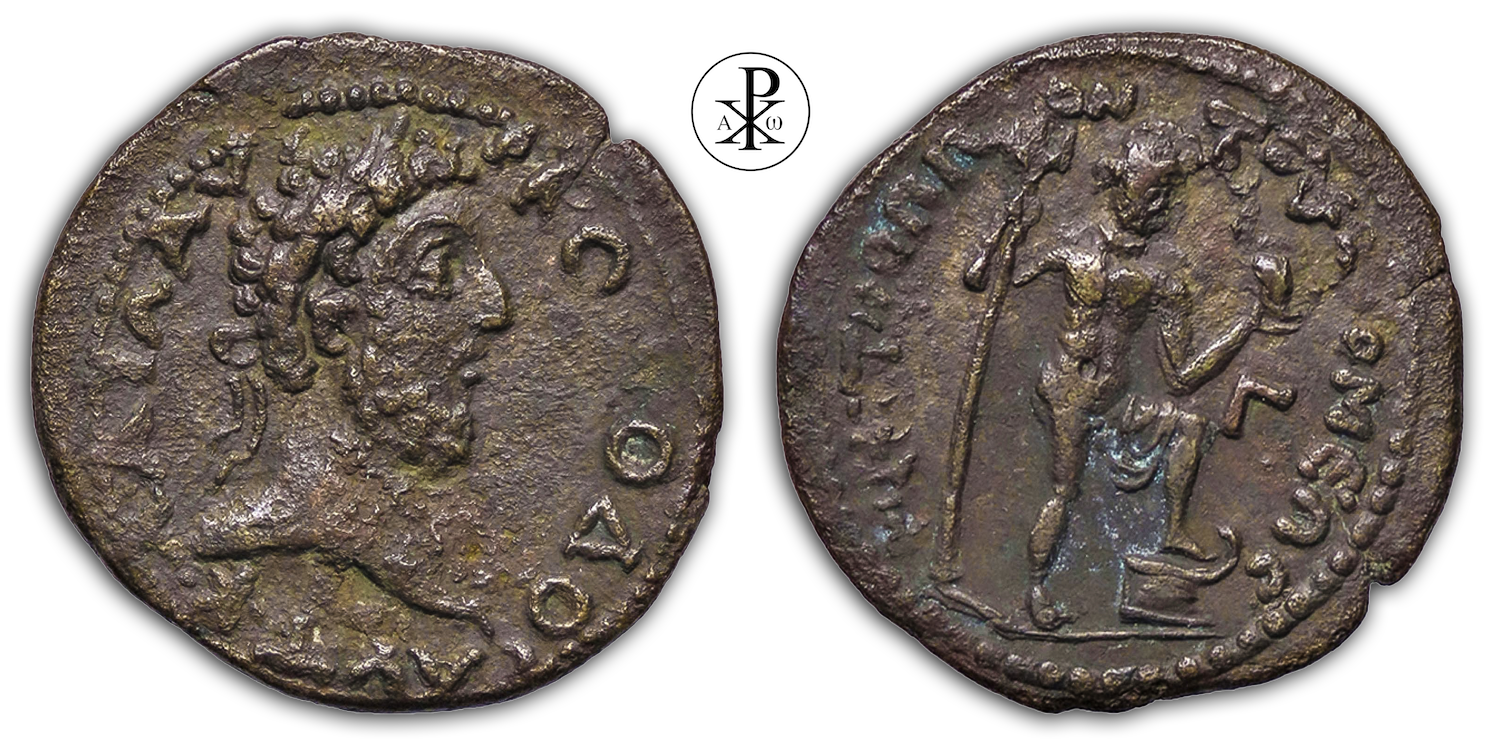Imperator Caesar Lucius Aelius Aurelius Commodus Augustus Pius Felix
Reign: Commodus
Mint: Tomis, Moesia Inferior
Date: 191/192 AD
Nominal: Bronze Trissarion
Material: AE
Diameter: 26mm
Weight: 6.58g
Reference: RPC IV.1 7138 (this coin)
RPC Online: https://rpc.ashmus.ox.ac.uk/coins/4/7138
Rare: Specimens 2 (1 in the core collections)
Provenance: InAsta Numismatica, San Marino (Auction 105, Lot 1120)
Provenance: Lanz Numismatik Munich, Germany (Auction 92, Lot 714, June 1999)
Pedigree: –
Special: 2nd known example, RPC Online Plate coin
Obverse: Laureate head of Commodus, right
Inscription: ΑΥΤ Κ Λ ΑΙΛ ΑΥΡ ΚΟΜΟΔΟϹ
Translation: Autokrator Kaisaros Lucios Ailios Komodos
Translation: Imperator Caesar Lucius Aelius Commodus
Reverse: Poseidon standing with left foot on prow, right, holding trident and dolphin
Inscription: ΜΗΙΤΡοΠ(sic) ΠΟΝΤοΥ ΤοΜƐΩϹ Γ
Translation: Meitrop Pontou Tomeos, Gamma
Translation: City of Tomis, Trissarion (3 Assarion)
Comment: The ruins of the ancient city of Tomoi (or Tomis) lie beneath the present-day port city of Constanța in Romania on the Black Sea. The ancient city was founded in the 7th century BC by Greeks from the Ionian mother city of Miletus (in Asia Minor) as Tomoi. In 29 BC, the Romans captured the region from the Odrysian kingdom, and annexed it as far as the Danube, under the name of Limes Scythicus („Scythian Frontier“). In AD 8, the Emperor Augustus banished the Roman poet Ovid (43 BC – 17AD) here by Augustus for the last eight years of his life. He lamented his Tomisian exile in his poems Tristia and Epistulae ex Ponto. Tomis was „by his account a town located in a war-stricken cultural wasteland on the remotest margins of the empire“. The city was afterwards included in the Province of Moesia, and, from the time of Diocletian, in Scythia Minor, of which it was the metropolis. Under the Roman Emperor Constantine I, the city was renamed Constantiana in honour of his sister and was an important metropolis.
Poseidon is a sea god in Greek mythology. He was fathered by his parents Kronos and Rheia. His siblings included Zeus, Hades, Demeter, Hera and Hestia. Poseidon was one of the twelve Olympian gods and was symbolised by the trident. In Roman mythology he corresponds to the deity Neptune. Poseidon was often worshipped by sailors at that time because he was considered the god of the sea. To ensure a safe journey, they threw a horse into the sea for him. Poseidon’s trident was used to interpret good and bad luck on the sea. While he could stir up the sea and shake the earth with his weapon in anger, he otherwise ensured a calm and safe journey. A mythological connection between the sea god and the ancient port city of Tomis is obvious – as many seafarers and merchants docked and disembarked here; and certainly also paid homage to and sacrificed to Poseidon.
In the course of this year 191 AD, Commodus changed his previous form of name Marcus Commodus Antoninus pius felix Augustus to the form Lucius Aelius Aurelius Commodus Augustus pius felix. At the same time, he usually disdained to have his more precise title put on the coins during this period; he even omits Britannicus. Since the legend on the obverse of this coinage already shows his new form of name, this bronze issue from Tomis belongs to one of the last coinages under Commodus from this city.
